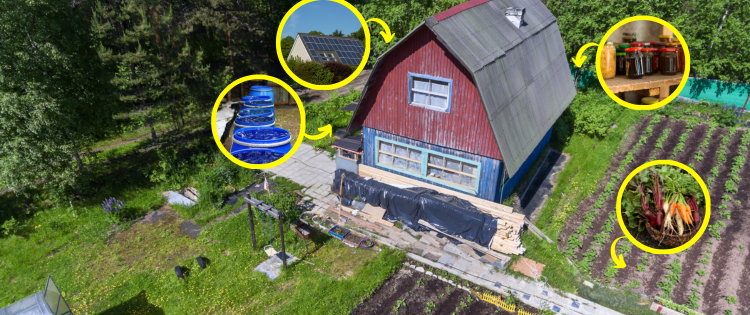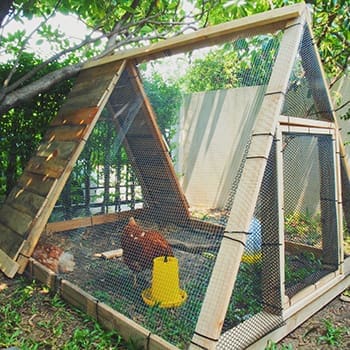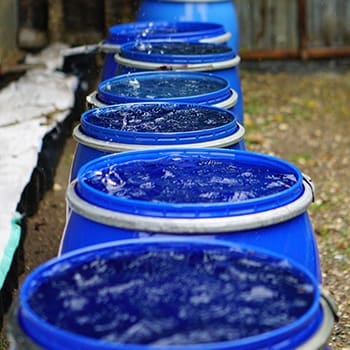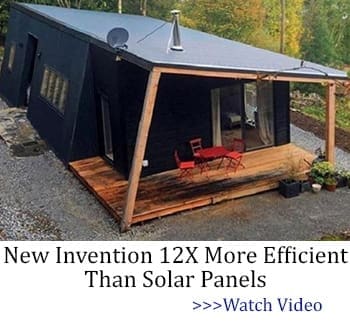One of the advantages of homesteading is reducing expenses by DIYing most of the necessary projects and items. You can try a lot of Amish DIY projects that will prove to be useful for any homesteader, but it comes with its own set of challenges. For one, many of these projects need a high level of skill and experience.
The Amish have honed these skills over generations, and for modern homesteaders, there could be a steep learning curve.
Another challenge lies in the fact that the Amish tend to avoid using modern machinery and technology. This means that their projects may take more time and manual labor if you’re accustomed to the conveniences of modern tools.
Additionally, sourcing the raw materials required for Amish DIY projects can be a hurdle, especially if you live in urban or suburban areas. The Amish often use locally available, natural materials that might not be as easily accessible to everyone else.
Remember, the goal is not to replicate Amish life exactly but to adopt some of their efficient and self-sufficient practices into your homesteading journey. So let’s begin:
Grow Your Own Food
An Amish vegetable garden is typically cleared by hand using a hoe or plow. This method is labor-intensive but saves electricity or gas on tilling your garden.
The pros of this method include keeping your garden free of pesticides. The con is you need to work more. The Amish often opt for heritage vegetable varieties, which can be more resistant to pests and diseases, and often have more flavor than modern hybrids.
Crop rotation is a method used by the Amish to maintain soil fertility. By growing different crops in the same area each year, you can reduce the risk of soil-borne diseases and improve soil structure and nutrition.
In order to grow your own food, keep in mind that the Amish often make their own compost from kitchen scraps and animal manure. This acts as a rich, natural fertilizer for the plants and helps improve the soil texture over time.
Instead of using chemical weed killers, the Amish control weeds through regular hand-weeding. This allows for the removal of unwanted plants without harming the environment. The Amish often save seeds from their crops to sow the next year. This is a great way to perpetuate your favorite varieties and save money on seeds in the long run.
Off-Grid Energy Solutions
Amish communities are experts at living off the grid and have fine-tuned energy solutions to cut down on their bills.
One of the most common off-grid energy solutions is the use of solar panels. Solar power is a renewable, clean energy source that can power everything from lights to appliances. The initial investment might be high, but over time, it significantly reduces utility costs.
Wind power is another off-grid solution. Many Amish families install small wind turbines on their properties to generate electricity.
Amish communities often employ wood-burning stoves for heating and cooking. Not only does this provide a cozy heat source during the winter, but it’s also a highly sustainable method to produce energy, particularly if you use fallen wood.
Lastly, the Amish make use of propane or natural gas for lighting, cooking, and refrigeration. Though these are not purely renewable sources, their efficiency makes them a better choice than standard electricity.
Canning
Amish homesteaders preserve their fruits and vegetables using canning jars. A DIY canning jar storage shelf offers adequate storage space and keeps the jars organized.
The pro here is the ease of finding items and shelf organization, while the cons include the cost of materials and storage limitations. Canning jars are also versatile and can be used for various purposes such as storing pantry items, making homemade candles or soap, and even drinking glasses.
Investing in a good-quality storage shelf can help save space and keep the area clutter-free. It is important to properly label and organize the jars for easy access and inventory management.
If you’re unsure what long-lasting foods to store for emergencies, check for inspiration what the Amish ate during The Great Depression.
DIY Chicken Coop
If you want fresh eggs in the morning, you need to build a chicken coop. An Amish DIY chicken coop can be made from pallets and is probably one of the most affordable projects you can have in your backyard.
The pros are fresh eggs daily and small-scale food production, while the cons include the need for materials and cleaning time.
Start by sketching a simple design to fit your space and needs, remembering to include a roosting area, nesting boxes, and a place for feeding and drinking. Use the pallet wood to construct the coop, including a hinged door for easy access. To weatherproof, cover the outer walls with leftover tin roofing or use a tarp.
You can use straws to make the bedding for your birds. You should also consider a ‘deep litter method’ where you simply add straw to the coop over time, allowing it to compost in place. This not only provides heat during the winter but makes clean-up easier as you only have to clear it out once or twice a year.
Root Cellar
Root cellars provide storage space for garden produce, homemade jams, and canned food.
The pros of this project involve less food waste, while the cons include the cost of materials and time investment.
To save on costs, consider building an underground root cellar using cinder blocks and a corrugated metal roof. Make sure to insulate the walls with straw or hay bales for added insulation. Additionally, a dehumidifier can help control moisture levels in the cellar to prevent mold growth. For a more above-ground solution, convert a spare closet or pantry into a canning pantry by adding shelves and storage containers for canned goods.
Rain Barrel Irrigation System
The Amish collect rainwater using barrels that store enough water for irrigation purposes.
The pros include free water for irrigation, while the cons include the need for setup and maintenance. Building a rain barrel irrigation system on a budget is quite doable with a few low-cost materials and a bit of elbow grease.
Start by sourcing a large, food-grade plastic barrel from a local food processing plant or online; some places may even give these away for free. Next, purchase a spigot and a downspout diverter kit from your local hardware store. After that, drill a hole near the bottom of the barrel to fit the spigot and another on the lid to connect the downspout diverter. The diverter will direct rainwater from your home’s downspout into your barrel, while any excess water will continue down the downspout, preventing overflow.
For irrigation, attach a hose to the spigot, and gravity will do the rest, providing you with a low-cost, eco-friendly irrigation system for your garden. Remember to cover the barrel with a fine net or screen to keep leaves, debris, and mosquitoes out.
Final Thoughts
The Amish community has perfected many homesteading projects. These ones can help you save money and become more self-sufficient in your home. I hope this article post helps you in cutting down your bills and in your journey to be less dependent on the grid.
Happy homesteading!
You may also like:
18 Long-Lasting Foods You Should Hoard (Video)
How You Can Find Out If Your Homestead Water Is Polluted Or Clean














